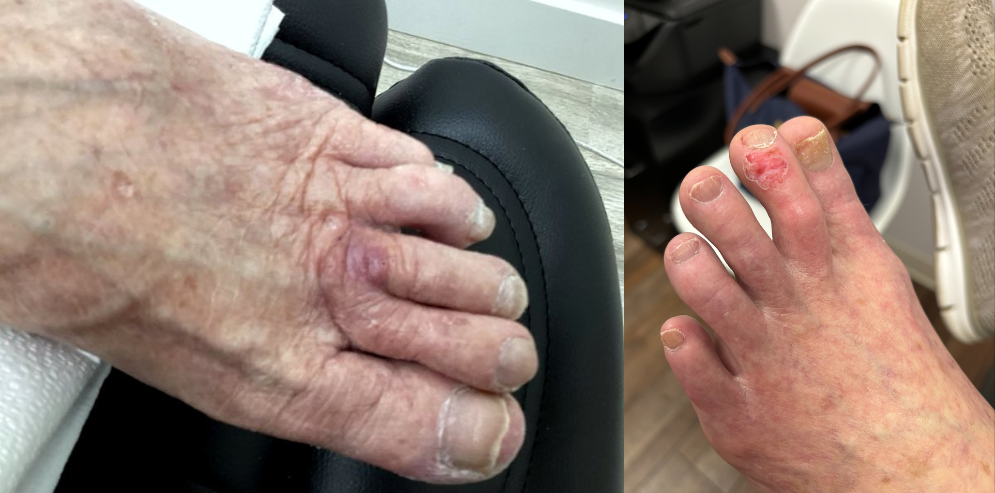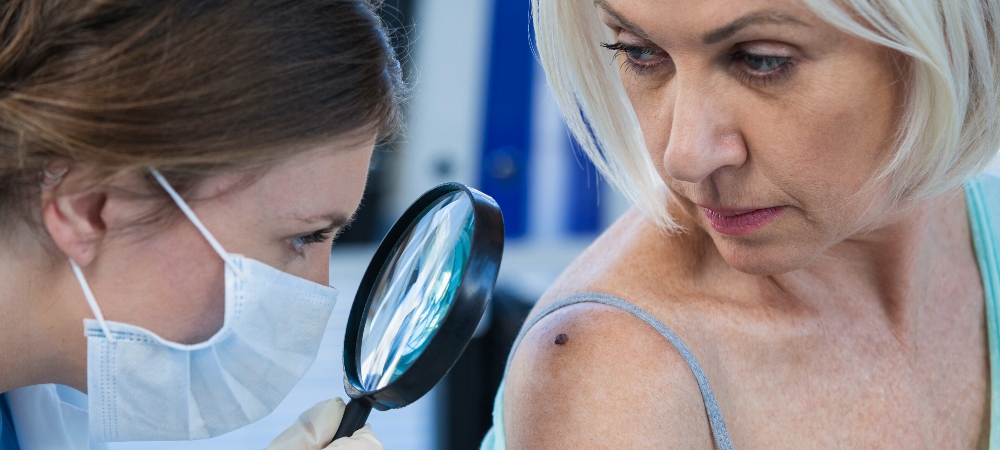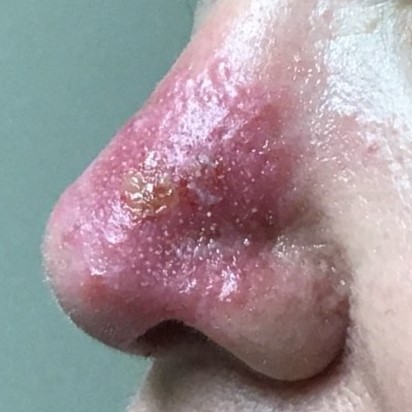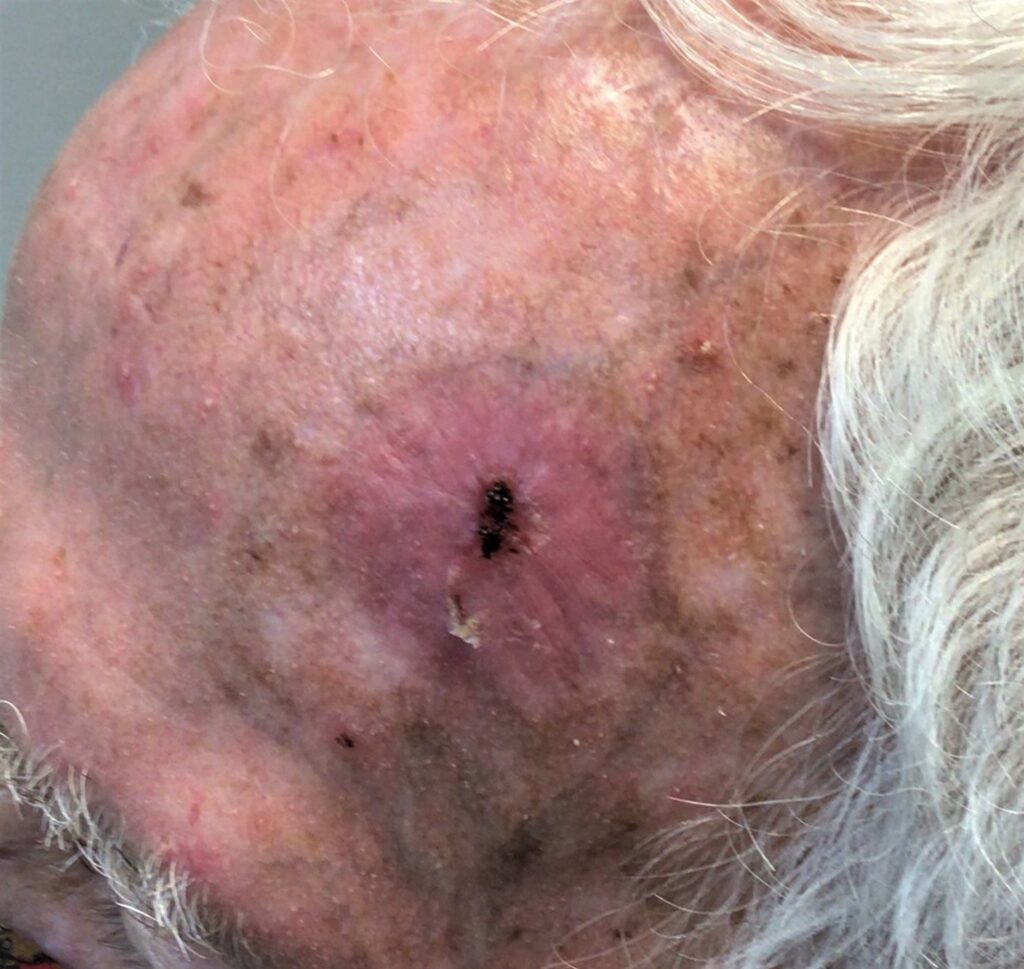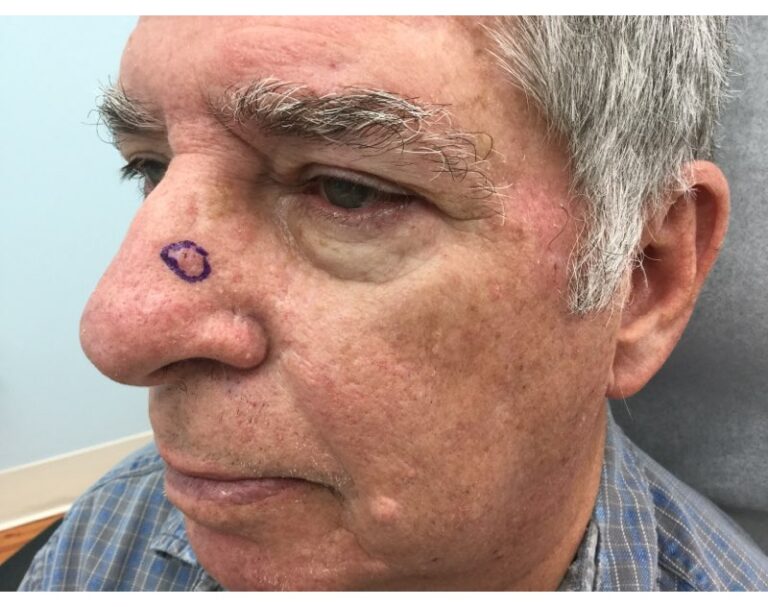
Approximately 85% of skin cancers are found on a person’s head, face, eyelids, and neck region. Detection in the early stages of skin cancer is key to treatment success, but do you know how to spot the early signs of skin cancer on your face? Common skin cancers can take many forms, and understanding the differences can help to inform your next steps. Ultimately, any unexplained changes in your skin are worth discussing with a dermatologist.
How Do Common Skin Cancers Appear?
- Basal Cell Skin Cancer: This is the first most common type of skin cancer, appearing on the skin as a pinkish patch or a flesh-colored, pearly bump.
- Squamous Cell Skin Cancer: This is the second most common type of skin cancer. It may present with a recurring sore that heals and reopens, a scaly patch, or a red bump that is firm to the touch.
- Melanoma: Because of its ability to spread to local lymph nodes, melanoma can be deadly, making early detection and treatment crucial. Melanoma may develop in a pre-existing mole, but it commonly develops as a new dark area on the skin.
- Merkel Cell Carcinoma: This type of skin cancer is very rare, but individuals with fair skin who are at a higher risk should know that it most often appears on the head or neck as a painless, firm, shiny nodule.
What Does Skin Cancer Look Like on Your Face?
As you and your healthcare provider look for early signs of skin cancer on the face, you should be sure to check the whole head and the neck as well! These are the most common locations for skin cancer cases because they get the most sun exposure year-round.
If you find a new or changing area on your skin, you can assess the likelihood of skin cancer using the ‘ABCDE’ method:
- Asymmetry: If you drew a line through the middle of the area, would the two halves match up?
- Border: Are the edges of the area irregular? Look for a scalloped, blurred, or notched edge.
- Color: A healthy blemish or mole should be uniform in color. Varying shades of brown, red, white, blue, black, tan, or pink are cause for concern.
- Diameter: Is the affected area larger than 6mm? Skin cancer areas tend to be larger in diameter than a pencil eraser, although they can be smaller.
- Evolving: If the size, shape, or color of an area changes, or it starts to bleed or scab, there is potential for it to be cancerous.
Don’t Mistake Skin Cancer for a Harmless Issue
The importance of the prompt treatment of skin cancer cannot be overstated. Unfortunately, some individuals may mistake skin cancer for other skin problems, including sunspots, pimples, scars, or dry skin. If you are questioning the health of a blemish or mole, you should schedule a skin cancer screening with a dermatologist without delay.
Explore Your Treatment Options in Advance
Mohs surgery can effectively treat skin cancer on the face, but since it comes with a significant risk of scarring, you may wish to explore alternatives with your healthcare provider. Image-Guided SRT is more than 99% effective at curing common forms of basal and squamous cell skin cancer, and it requires no surgery whatsoever! If you’d like to learn more about how it works, please call GentleCure at 855-936-4411 or speak with your trusted healthcare provider.
